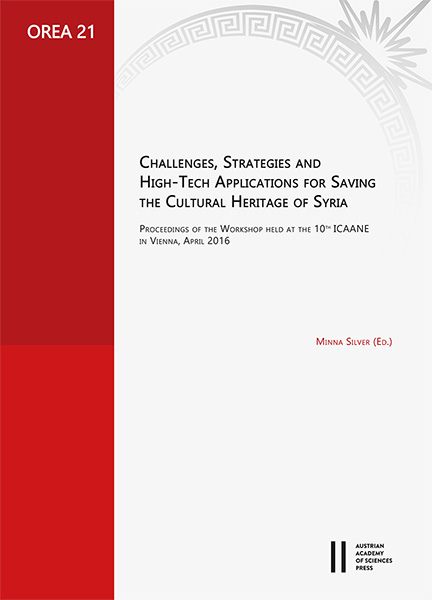
Challenges, Strategies and High-Tech Applications for Saving the Cultural Heritage of Syria, pp. 227-240, 2022/03/24
Proceedings of the Workshop held at the 10th ICAANE in Vienna, April 2016
The practice of recording and digitising cultural heritage sites on computers has wide acceptance amongconservation professionals. Recently, the massive loss of sites in areas of conflict has highlighted the urgent need forboth documenting heritage sites and training and building the capacity of local stakeholders This process should notbe limited to computerisation, but also includes a meaningful interpretation of sites with respect to their intangiblevalues, which necessitates new tools. Our aim is to use new technologies to create accurate 3D recordings of at-riskheritage sites, to contribute to capacity building in the region, facilitate the transfer of knowledge and spur the creationof permanent architectural inventory units. A specific aim of the project is to develop a new sustainable activity byempowering local professionals with training and tools to continue the documentation work of cultural heritage beyondthe life of our project. It is our hope that Project ANQA should serve as an example of ‘people-centred’ cultural heritagedocumentation in a digital age through an open-access, participatory web platform. Collected data should be accessibleand useful for scholars, professionals, and the wider public with state-of-the-art tools. Project ANQA is supported bythe Arcadia Fund (London, UK) and initially worked through a partnership of ICOMOS, CyArk and Yale University totrain local professionals in documenting at-risk sites in 3D through an interdisciplinary process. It began successfully inSyria thanks to a fruitful local partnership with UNESCO and the DGAM Training sessions were organised in Lebanonwith exercises in photogrammetric and laser capturing 3D data The project included the provision of equipment,as well as computer programs. A first batch of sites in the World Heritage historic city of Damascus was chosenas being representative of the typological variety of urban historic buildings in this city The progress of the localteam was monitored and remote technical support and guidance provided Visual outputs have just been processedProject ANQA represents a new challenge for a professional NGO like ICOMOS as it includes setting up a working,scientific, technical and financial partnership between half a dozen specialised institutions (Arcadia Fund, CyArk,DGAM, ICOMOS, UNESCO, Yale and then Carleton University) based in different countries while also respondingto emergency needs in a war situation, with difficult material and logistical issues. The good results that have beenachieved to date are due to the enthusiasm and dedication of all participants.
Keywords: Syria; 3D; capacity building; heritage at risk; open access; sustainability